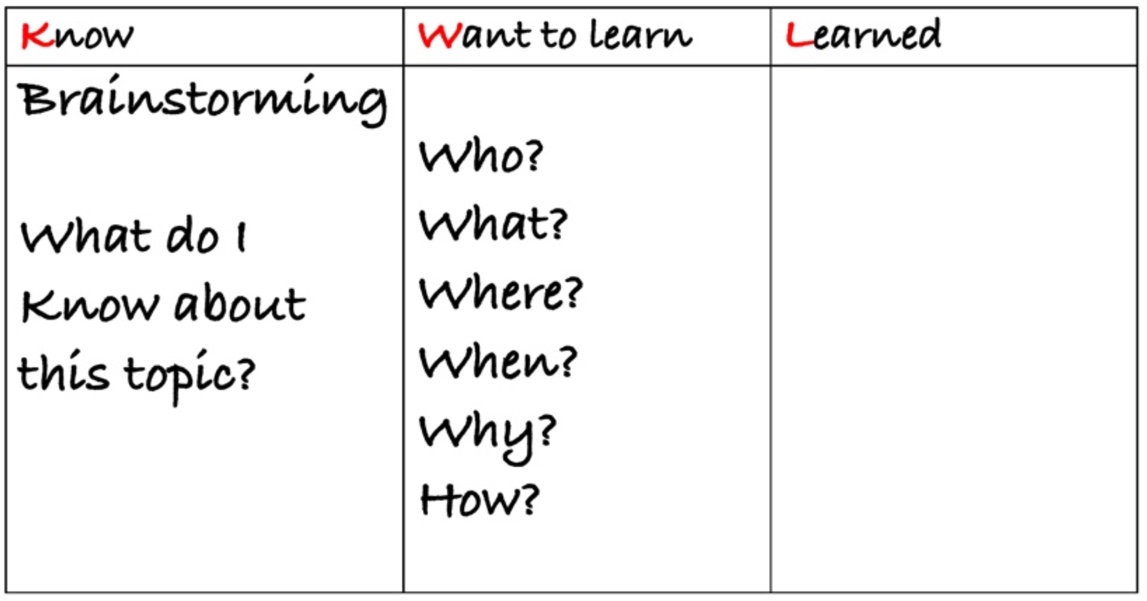From Readers to Learners - Tips for Parents

Every time before a test, my child reads the same text over and over again but can’t remember anything! This can be so frustrating!
Many parents share this struggle and wonder if there’s anything they can do to help their child understand and remember what they learn. Luckily, there is!
This article describes three learning strategies that can help your child understand, memorise, and recall the information they have to learn. More specifically, we’ll see how K-W-L chart, coding and translating a text can be valuable tools for achieving better learning results.
But first, let’s see how reading, learning, and strategies are connected.
Reading & Learning
Reading is one of the core activities of learning. However, only recognising words on a paper doesn’t lead to successful learning.
You need to understand what you read, memorise, and recall the main ideas when you need them. This is where reading strategies come into play. One of the main differences between good and poor readers is how they try out and use reading strategies. Good readers actively engage in their reading - they read, reread, read ahead, summarise, predict, paraphrase, seek help, and visualise.
Firstly, they are active before reading and employ pre-reading strategies before they start reading. Also, they monitor their comprehension and determine what’s important as they are reading. Finally, their learning continues after they’ve finished reading.
Let’s see how to include K-W-L charts in all three phases of reading.
K-W-L charts
This type of graphic organiser helps learners be active as they read. The first column is all about what they know about the topic. Asking questions such as "What do I already know about this?" helps your child activate their background knowledge. This activity acts as some kind of learning glue. Remembering the information we already have helps new information stick in our brains. Also, it’s easier to make connections between old and new knowledge and understand new concepts.
So, the first step is to write down as many things a learner already knows about the topic as possible.
Then, the next step is generating questions. Again, encourage your child to think about everything they want to learn about the topic. Asking questions works because it makes your child an active learner instead of a passive recipient of information.
And then, we get to the reading part – this is the column I learned.
As they go through the text, the learner writes down all relevant information from the text. Distinguishing between important and interesting is another essential skill children have to develop and practice to make their learning more effective. It takes time and effort to hone this ability.
You might wonder, what happens after reading? Haven’t we just established that good readers and learners are active after reading?
This is why this chart gets another column – Questions. Encourage your child to think about everything they’ve learned and what else they want to discover. Asking questions keeps your child curious and develops a love for learning and exploring.
Another way to work on reading and learning motivation is by employing strategies children find interesting. How about a coding game?
Code a Text
Code a text is a strategy that helps your child develop another reading skill – monitoring for meaning. How does it work? Here are step-by-step instructions your child can follow to actively engage in reading and learning:
- Read a chunk of text.
- Think about what you just read.
- Ask yourself: what symbol would I use to remind myself of this information? Is this important? Confusing? Does it remind me of something?
- Draw that symbol.
- Read another chunk. Remember: read just one chunk!
- Think of the words the author wrote. Which symbol would best represent these words?
- After reading, go back and skim the symbols. Think about what you read.
After reading, thinking and drawing, it’s time for writing.
Translate a Text
Encourage your child to look back at the symbols. Take one, recall what it means and translate it into a phrase. Again, it’s important to write the most relevant information, not everything the author wrote.
To make these two strategies even more interesting, your child can ask you to guess what the symbols mean and write or tell a story behind the symbols. Show them that learning can be fun.
Conclusion
It takes patience and continuous guidance when using these strategies.
This is how a child who reads the text over again transforms into an engaged learner who thinks, reads, draws, writes, and recalls information. Which approach will you show your child to get more out of their learning?
Key Takeaways
- Active engagement leads to better learning
- It’s important to activate your background knowledge
- Asking questions while reading keeps your child curious



